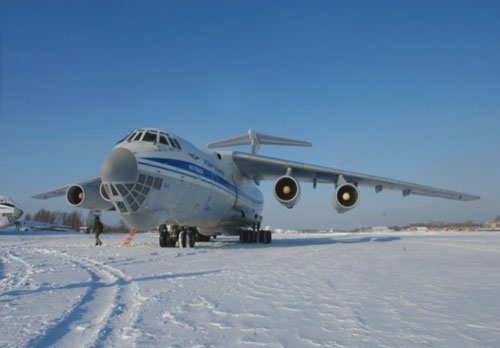Aircrafts-laboratories (flying laboratories) are intended for cosmonaut professional training and for carrying out specific technical, technological, and ergonomic tests of various space engineering items as well as for medical experiments, biomedical studies of organisms and their vital activity under microgravity and low gravity conditions. Starting from the preparation for the very first space flights up to the present day different types of specially upgraded aircrafts were used as flying laboratories: Tu-104 A, Tu-134 LK, TU-154 MLK, and IL-76 MDK.
IL-76 MDK flying laboratory was designed and built on the basis of Il-76 MD commercial supply aircraft to perform parabolic flights for purposes of creating short-time weightless and low gravity environment (including lunar and Martian gravity).
- Duration of a short-time weightlessness mode – 25 - 28 seconds;
- Number of in-flight modes - up to 20;
- G-load – up to 2g.

Cosmonaut/astronaut candidate training under conditions of short-term and reduced gravity aboard Il-76 MDK is intended to practice and improve their operator skills and also to:
- Acquire basic experience of body orientation and movement in weightless environment using different restraints;
- Exercise donning/doffing spacesuits and special outfits;
- Practice and improve professional skills in support-free environment;
- Practice and improve skills of performing nominal operations being suited up or not suited in the context of the forthcoming space mission program;
- Gain experience in evaluation of the operation convenience of systems, equipment, and used tools;
- Evaluate reliability of equipment and tools used to provide the quality performance of technological operations;
- Practice interaction between crewmembers while performing individual operations of EVA timeline;
- Improve cosmonaut’s tolerance to the effect of specific physiological factors in weightlessness.


